Locomotive Engineer Darrin Crone provides us with an insight into recent weeks’ work on restoring the great locomotive.
Week commencing 6 June
The removed wheelsets have received a lot of attention this week, not just by the volunteer work force but also by the public from the viewing gallery. We are currently removing all the paint from the wheelsets to allow a detailed inspection prior to replacing the tyres. It does take some time to thoroughly remove all the paint from the wheels as with the spokes there is a considerable surface area. It has been a magnificent effort by all those who have been involved.
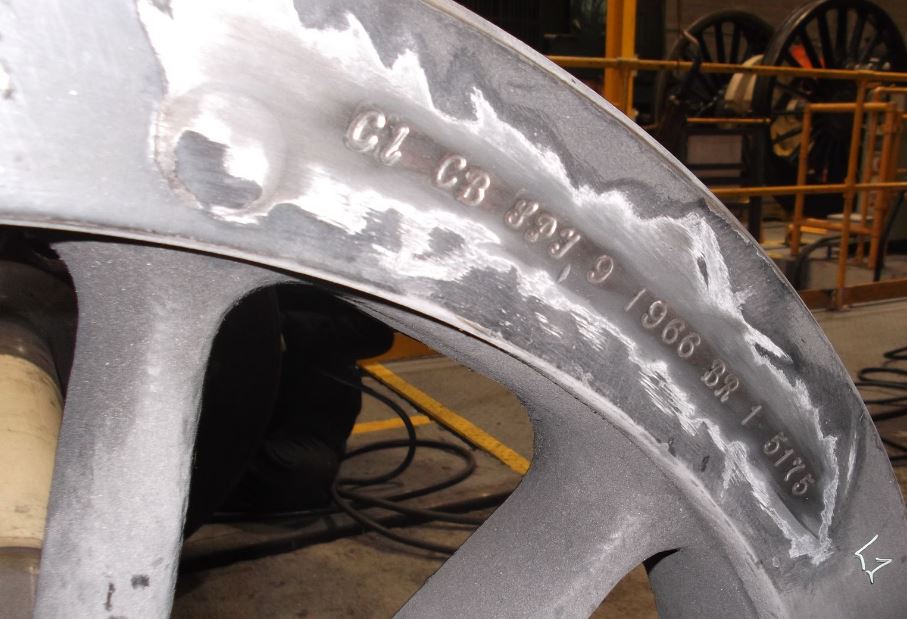
On the frames this week the brakeshafts and reverser shaft were removed. Removing the reverser shaft also included the removal of the vacuum clutch that locks the reverser position. That leaves no major items to be removed from the loco between the cylinder block and the Cartazzi. This completes the removal of the entire brake system on the loco.
Work began this week on the stripping of the bogie. It had it’s wheelsets removed last week and is stood on packing. This week the front dust guard and AWS carrier plates were removed. The platework covering the side control springs were then removed. The trailing side control spring was then removed. We used the NRM’s spring compressor. This saved us a considerable amount of time and trouble, and allowed the spring to be removed in a controlled and safe way.

On Saturday the second Junior Volunteers days went very well. Both the centre splashers were removed and craned clear. The response from the juniors has been very positive. Also on Saturday the detailed examination of the superheater header was begun. This involved the measuring the superheater header element holes.
Week commencing 13 June
The entire lubrication system has finally been removed. It must have the most components of any system on the loco judging by the tangle of pipes we have to clean. A good start has been made and many have now been put in store, but there are still plenty to do.
Dismantling the bogie continued apace this week. The complete side control assembly has now been removed. The bogie frames are now ready to be cleaned, needle gunned and examined.
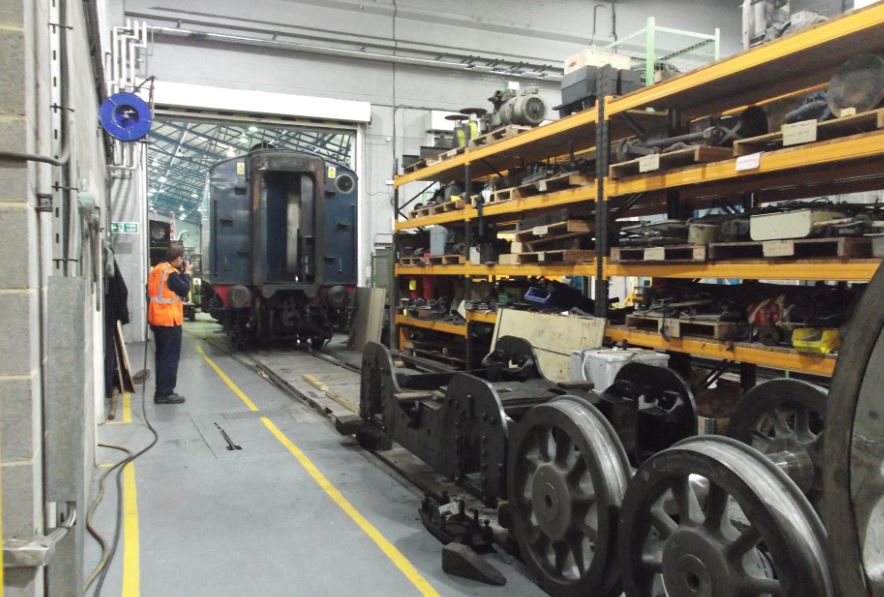
Needle gunning of the wheels has continued this week. This is a very time consuming job and nearly everybody has had a go. We are now on to the last set, the driving. To completely remove the paint on this wheelset required the clamp that supports the crank axle to be removed. After this was done the clamp was replaced. The backs of the tyres have been wire brushed so that accurate back to back measurements can be taken.
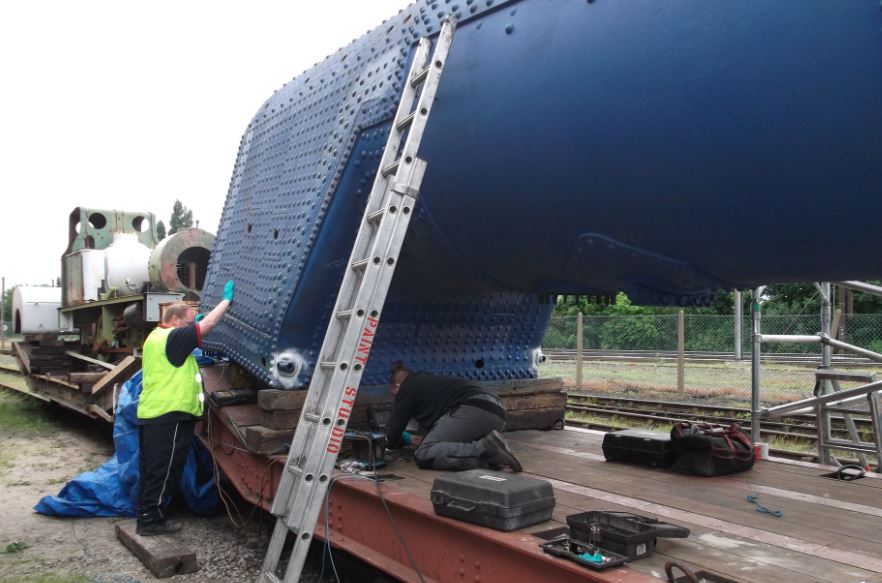
The NDT of the boiler was completed this week. As the boiler had been so thoroughly prepared the testing went very smoothly with only a few welds requiring last minute wire brushing. We now await the final inspection report.
Week commencing 20 June
This week our attention shifted to the area of the cylinder block while maintaining progress on the wheels. The needle gunning of the wheels was completed this week with the last patch of paint coming off one of the bogie wheels. Thanks to all the Engineering Team volunteers who have endured this job. Now we can start on the big one, the frames. I can hear the groans from here!
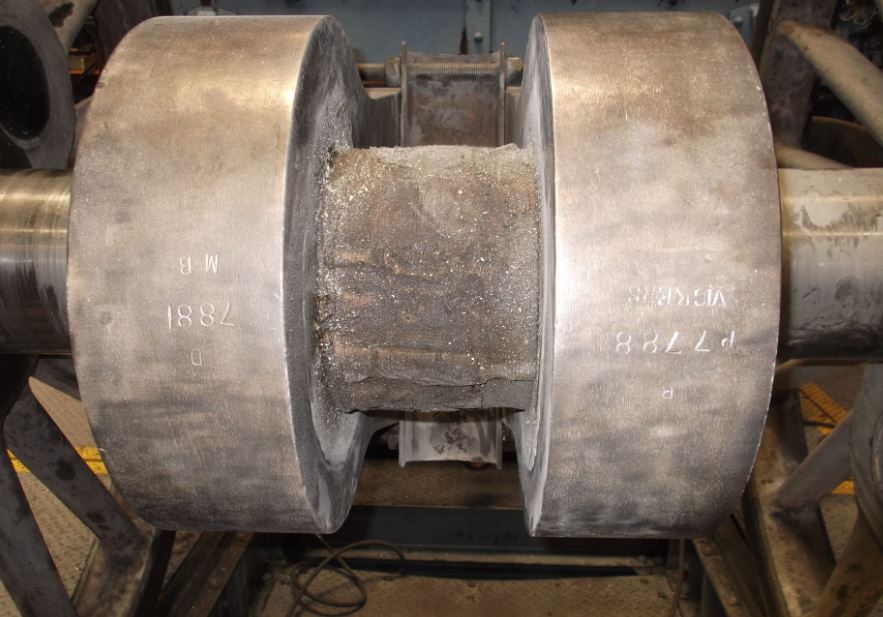
The wheelset survey and detailed examination was started this week now that they have been prepared. To the amazement of one of our volunteers a micrometer was used. He thought we never used such a device on a steam locomotive.
In preparation for stripping the paint off the loco frames the Engineering Team turned their scrapers to the frames. The frames have been cleaned before but now we have access to the areas previously hidden behind the wheels and where the Junior Volunteers have removed the splashers. Though not getting much coverage in the weekly reports we are now having to do lots of cleaning. On Friday a trolley load of bogie suspension components were taken round to the prep bay and used the steam cleaner used on them.
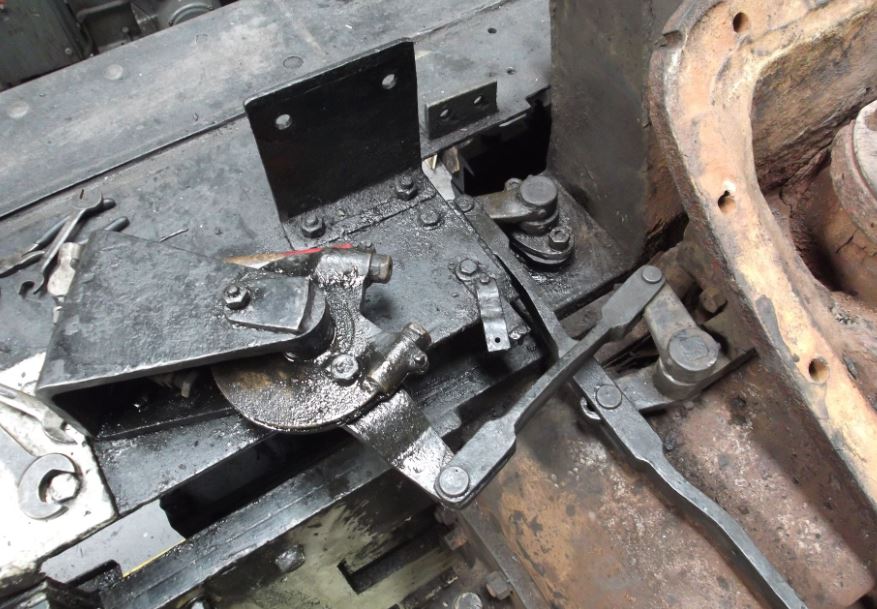
In the area of the cylinder block the front gravity sands mechanism was removed that has a rod going across the back of the saddle. This was then all cleaned off. When removing a bracket that supports the mechanism a mounting stud broke off in the saddle casting, which then took most of the afternoon to remove and clean up the hole.
Week commencing 27 June
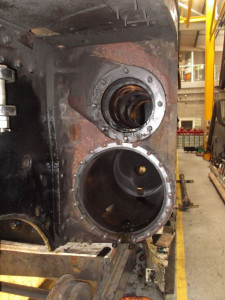
On the bogie the process of stripping the paint off suspension components for detailed inspection was continued. The bogie axlebox springs and the side control springs. All subject to test were found to be OK and were compared to the specification on the LNER/BR drawings. After the springs other bogie components were subject to dye penetrant testing for cracks. The bogie suspension beams were done and some of the spring hanger bolts. All tested so far are OK for further service.
On the locomotive itself, or what remains of it, the outside cylinder covers and pistons were removed. Later in the week the inside cover and piston were removed, though this took considerably longer than the outside. Heat was required to get the nuts off the centre cover. Even with the boiler off and the pipework removed it’s a confined space and it is not possible to get use out of the overhead crane until the cover or piston are moved a considerable distance forward from under the saddle casting. To get the piston forward a large amount of packing was used to make a platform and then the piston was slid forward. The piston was then slung and lifted clear.
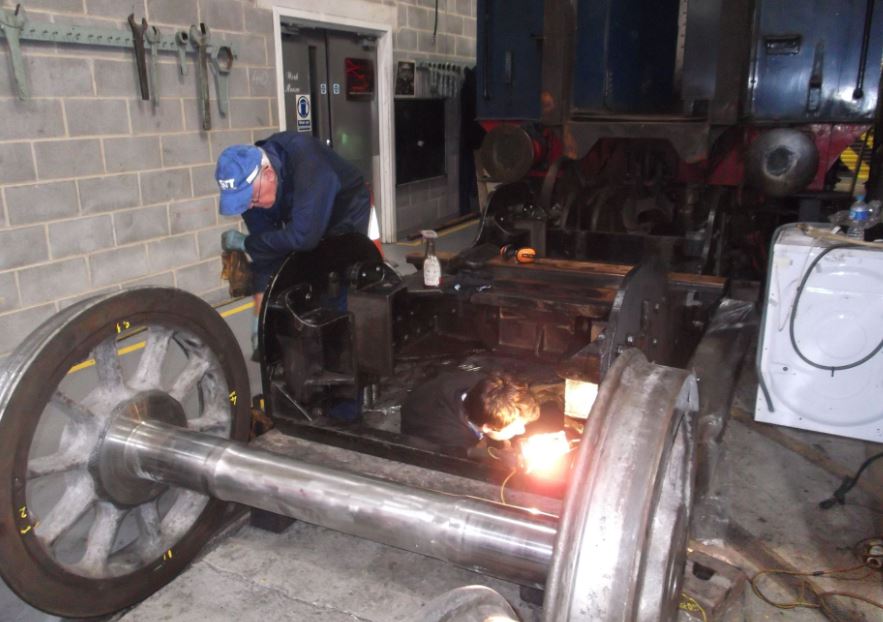
The frames received further cleaning this week and the first section of the outside of the frames was needle gunned as a test so that the time required to do the entire frame could be judged. It was satisfactory so needle gunning was continued and good progress was made down the left hand side.
Week commencing 4 July
There’s been a lot of catching up on the cleaning this week and all the Engineering Team has helped. The standard of cleaning is also improving, meaning there will be less work in preparation for refitting. The steam cleaner is being put to good use outside in the prep bay on the larger items when we can as Flying Scotsman or 48151 are often in the way. Elsewhere the time consuming job of wire brushing components removing corrosion, carbon and paint has been continued. The cylinder covers have been completed and all the suspension components that have to be inspected.
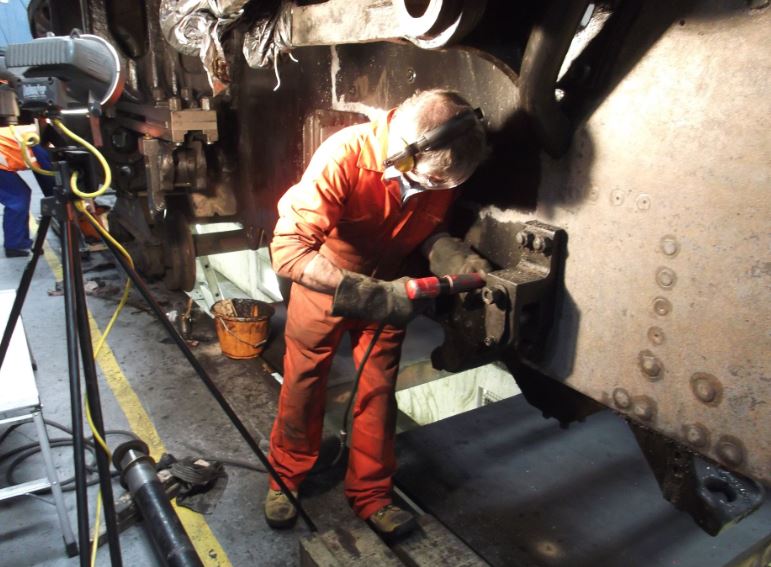
The first piston valve was taken out last Saturday and the removal of the other 2 was completed this week with the removal of the right and middle valves. To take the right hand valve out required the removal of the 2:1 lever. This is part of the Gresley conjugated valve gear and stretches across the front of the loco.
On Saturday we had a very successful Junior Volunteers day. Now on their third day with us they are getting used to our working methods and removed the leading coupled wheel splashers in about half the time it had taken to do the others. The Juniors are showing real potential.
Week commencing 26 July
It’s been another week of cleaning and stripping, and I must thank all involved for their contribution. Some new small wire brushes and pipe brushes have been brought in and these work very well. I know because I spent all day Saturday using them between the frames. I know some of you think I don’t get my hands dirty but I have witnesses. The new parts washer was assembled on Tuesday and is now ready for use, which will be a great help with the smaller parts.
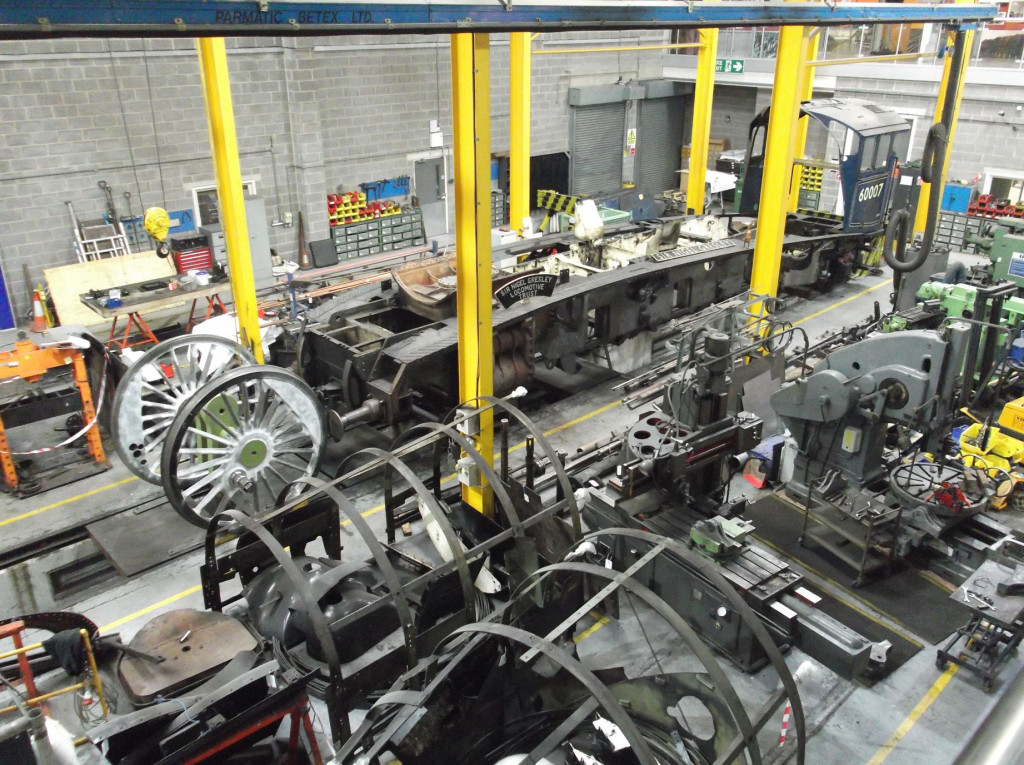
De-carboning the steam chests has been started. Our CME has briefly inspected the steam chest and said he was very pleased with the results. Our CME was on site to measure the middle slidebars before removal.
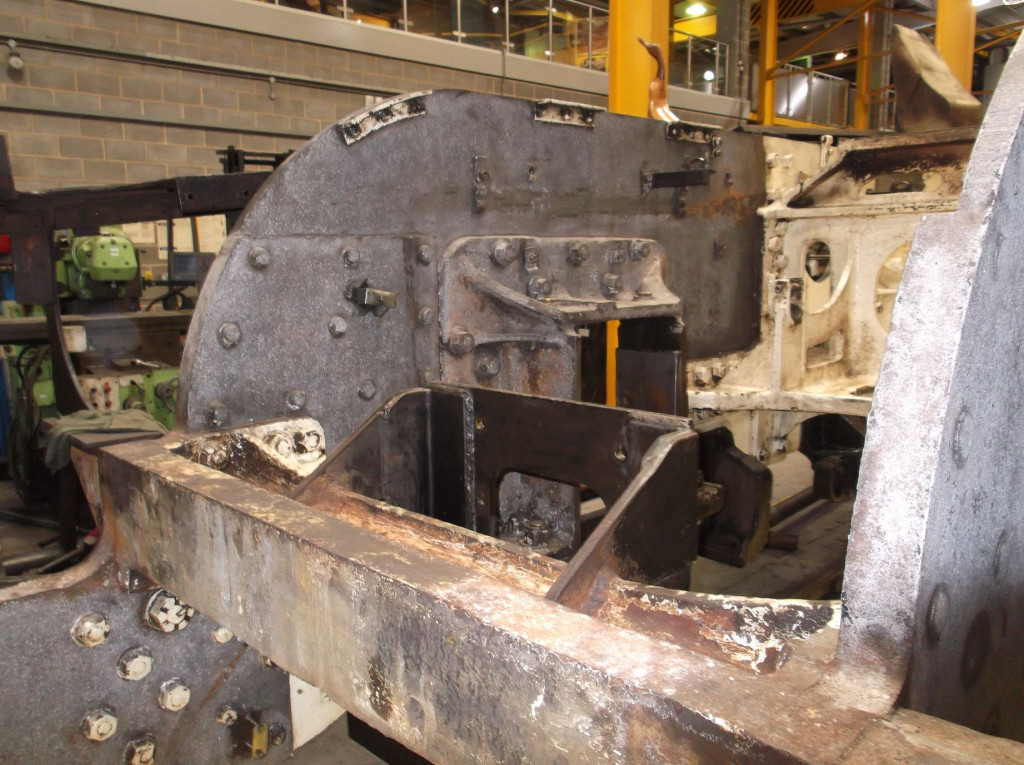
The outside ones have been measured and were removed last week. While on site the driving wheelset crank pins and journals were inspected and measured. This wheelset can now be prepared for transporting to our re-tyring contractors.
This week the main steam pipes have been wire brushed in preparation for thickness testing and the regulator valve has been similarly treated prior to inspection.
Work on smaller removed parts at the cleaning bench continues, though the number of parts waiting on the bench is much diminished thanks to the continued efforts of the Engineering Team members.
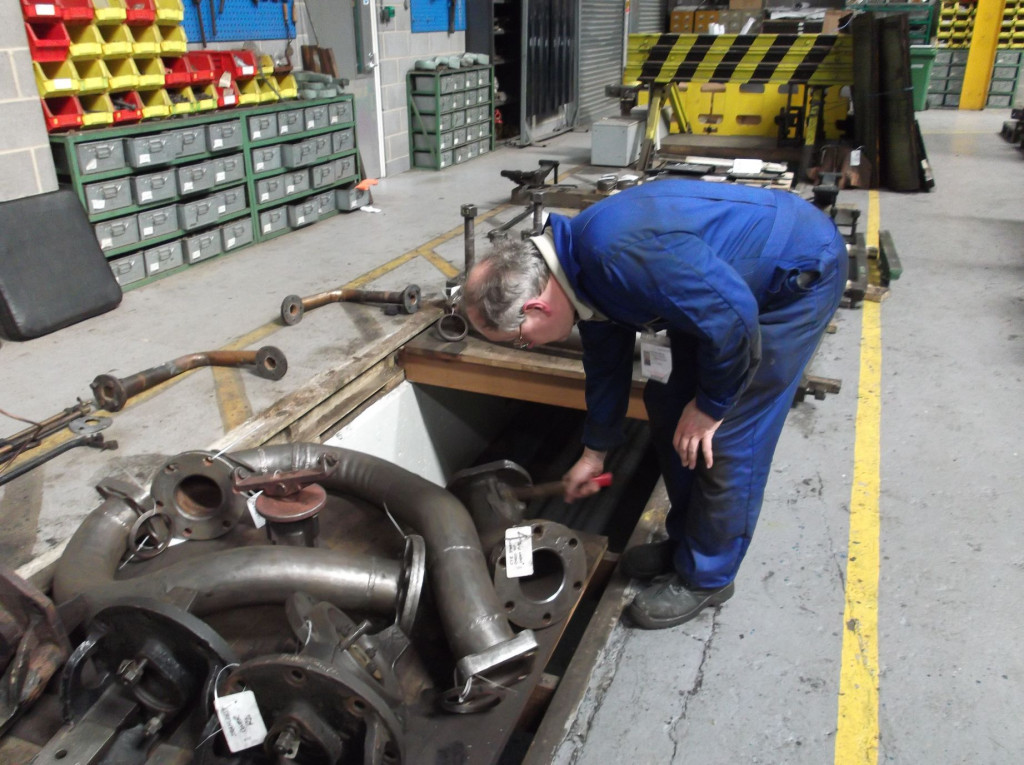
When removing the casing from the outside of the right hand cylinder early this year a number of screws were broken off in the casting. They have to be removed and progress was made on this job this week. It has to be carefully done as the remains of the screws have to be drilled out while avoiding damage to the cylinder casting itself.
The main area of work has continued to be the stripping of the frames. Sections of frame have been cleaned in advance of the needle gun. Good progress has been made between the frames but it is a slow process compared to the flat surface of the outside. However the Engineering Team have shown great staying power with this job. In fact we are starting Monday Working so that we can put in an extra day a week on this. A great job has been done in deep cleaning the frames so that when needle gunned the flakes break off and we don’t get a mess on the bare metal of the frames.
This is the fifth update –you can catch up on the previous posts here.
Hi, what paint do you use on these engines? As the owner of Paragon Paints Id be pleased to discuss the possibility of supplying the museum with ultra high quality traditional brushing enamels, undercoat and primer. See http://www.paragonpaints.co.uk for further details.
So glad to see the old lady getting plenty t.l.c may she continue to run for many many more years to show future generations the glory of steam
May I receive your bulletins by e-mail? If so please ‘sign me up’. Harry Gow
Whats the audience watching WIP got to do with it?
Means that those in the gallery were also paying attention.
If you wish to increase the life of components, use zx1 metal treatment. visit zx1 reviews. you.l be surprised.
just been reading throught all of your progress reports on sir nigel gresley as my future wife nora got to ride behind sir nigel gresley at didcot railway centre when sir nigel and king Edward 2 and tornado was all together to commemorate their br blue and my future wife nora has seriously fell in love with your beloved sir nigel gresley and she thinks the world of him we are so so happy that everything for sir nigel gresley is going so well would be able to contact my future wife nora tomorrow morning and tell her that everything is going well on sir nigel as she really loves him now as she had never ridden behind an a4 loco before until I took her out to didcot railway centre as a birthday treat back in april this year and she had a ride behind sir nigel gresley at didcot and really fell in love with him and my family members all love him too and it was also very nice to see that you managed to get the last six a4 locomotives together again to celebrate mallards 126mph run on her anniversary and I,m really happy to say that I have turned my future wife nora into a proper steam locomotive fan keep up the good work with sir nigel gresley and we hope to see him back on the rails again soon many thanks once again from john francis and my future wife nora jones